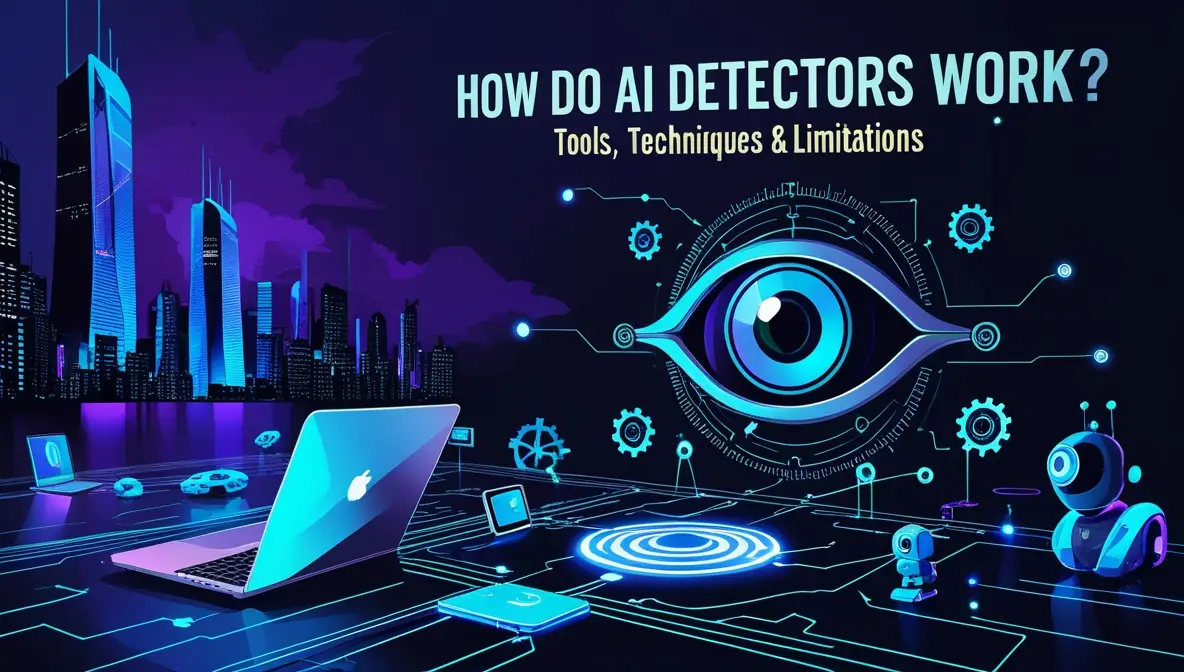As AI breaks down data to look for patterns and irregularities. They operate on principles of algorithms that scan for information and spot departures from the norm.
Artificial intelligence labelers are vital across multiple industries today. They assist in efforts to protect data and defend against threats, as well as in cybersecurity. In health care, they can help diagnose diseases early. Companies employ them to monitor customer behavior and enhance their services. However, it can be challenging to understand the complexity behind how AI detectors work.
They depend on machine learning, a type of AI that allows the computer to learn how to perform a task based on data. This requires training models on a big dataset. Once trained, such models can forecast results or identify anomalies. Artificial intelligence detectors continue to learn and improve as they receive more information. This gives them intelligence and accuracy over time. Through understanding the fundamentals, we can understand their implications on our daily lives.
Credit: narrato.io
Introduction To AI Detectors
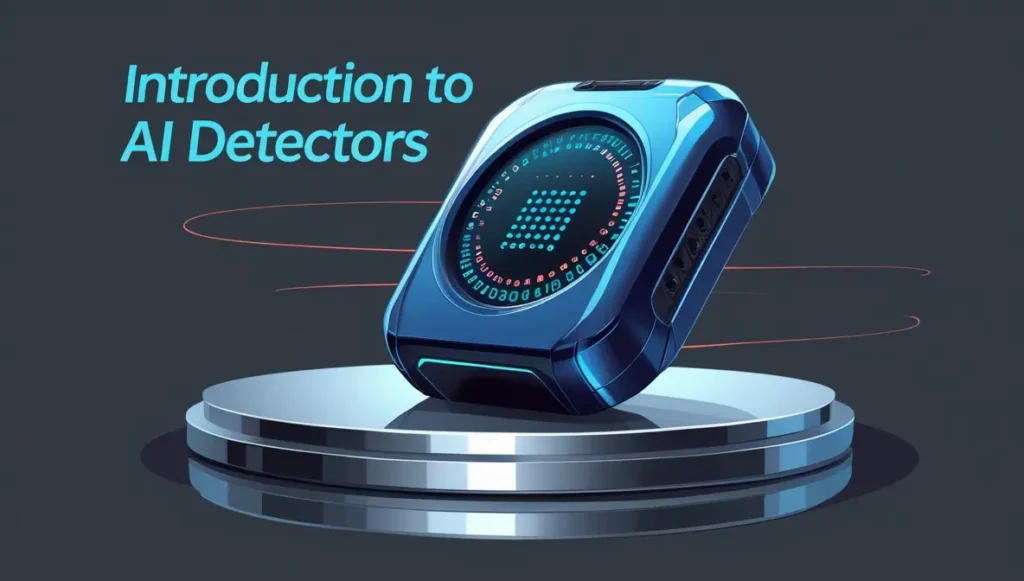
AI detectors are devices that detect and process AI-generated contents. Given the rapid growth of AI, it is crucial to understand these detectors. You might wonder how they work and why they matter. AI detectors are essential bulwarks to keep digital spaces real. They help maintain the integrity of online information, something of increasing concern to a great many people.
Purpose And Importance
AI detectors are an important part of today’s wide-reaching tech landscape. They are mainly designed to differentiate between human and AI-generated content. You could consider them as digital watchdogs, ensuring authenticity. They’re important because they help filter misinformation and generate trust in online encounters. Imagine reading a news article, then a disclosure informing you that the article was automatically generated with little human oversight — AI detectors strive to stop this.
Historical Development
The development of AI retrievers is absolutely amazing to me. The early models were simple, with minimal attention to complex patterns. As artificial intelligence became more advanced, so did these detectors. You might remember some of the earlier spell checkers — they were elementary, but they provided stepping stones that led to more sophisticated AI systems. Modern AI detectors have been progressively including machine learning to improve their detection. “They can analyze subtleties of language that they never could before.”
Think about how fast technology evolves. AI detectors were exotic just a couple of years ago. Now, they’re a necessity. This fast pace of advancement begs the question: 10 years from now, where will AI detectors be? How will it keep up with fast-changing technologies? Progress is driven by your curiosity. Just take it with you as you dive into the world of AI detectors.
Core Components Of AI Detectors
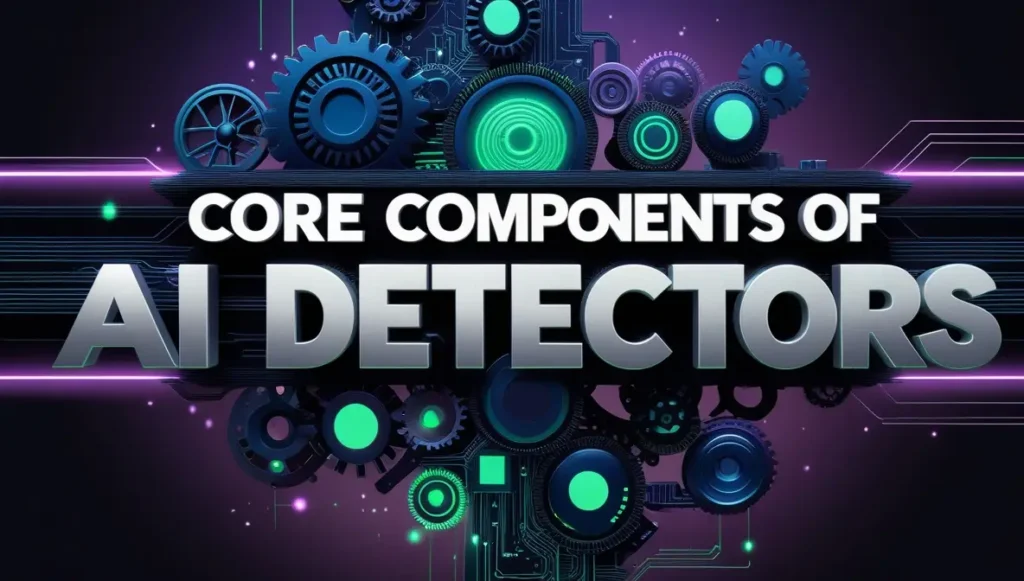
AI detectors use code, and therefore data-driven pattern recognition. They analyze input data for anomalies or certain characteristics. By Learn From predecessors detections, machine learning models improve the precision.
Knowing the basic building blocks of AI detectors is key knowledge for those who are interested in how these systems work. Each is an important piece in making sure that AI detectors function well and are accurate. In unpicking these parts you will learn about the technology behind AI detectors and how to apply these effectively across different applications.
Data Collection Mechanisms
The AI detector is constructed by the initial data collection step. AI logic requires a superabundance of data in which to learn and base fact-based decisions. Think back to the last time you taught a child how to identify shapes. You would show them lots of examples until they got it. By the same token, AI detectors need data to discover patterns and anomalies. Data sources can be extremely diverse. They could be sensors, cameras, or even user input. At the core of the AI are the data on which it is trained, as this data defines what it can observe and decide. Ever thought about why face recognition on your smartphone occasionally doesn’t work? This is usually because it was trained on too little or poor data.
Algorithmic Foundations
Algorithms are then involved after the data is collected. These are the mathematical instructions that tell the AI how to handle the information. Algorithms are the heartbeats of AI detectors, which enable them to process data and make inferences. Think of them as the equivalent of the recipe that leads a chef in the kitchen. Now, machine learning algorithms are critical. The AI learns from data, improving its accuracy over time. Your email spam filter is an algorithm that tries to keep out of your inbox messages you probably don’t want. They learn from every email you flag as spam, improving their filtering criteria. Have you ever wondered how your streaming service knows to recommend just the right movie or show? That’s algorithmic magic in action. Once you grasp these components, you will see the sophistication and power of AI detectors. How can such insight help us feel better about our use of technology?
Machine Learning In AI Detection
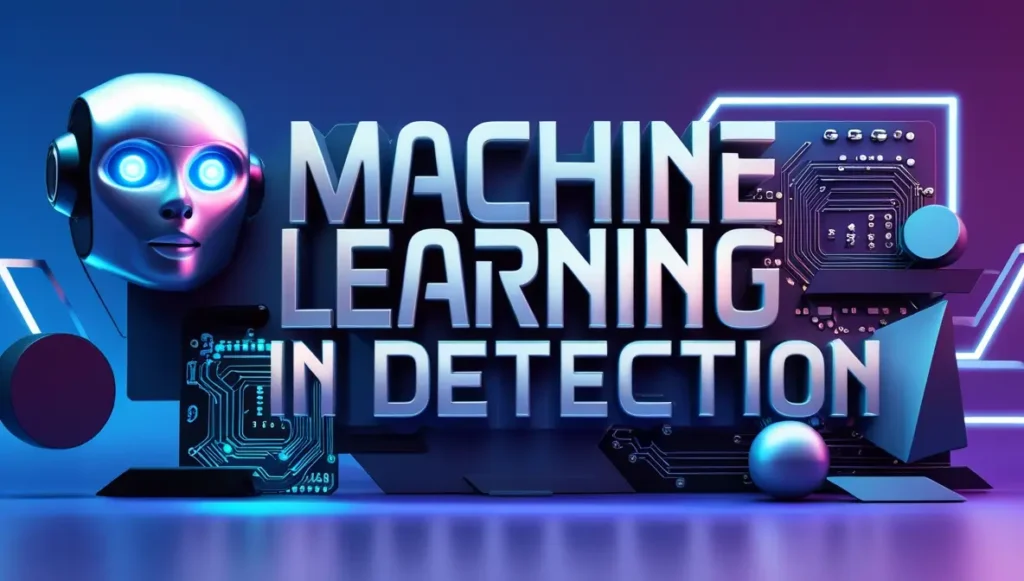
Machine Learning. The modeling division involves multiple steps to model the detection of AI through the reconstructed images.
Machine learning is a key component in AI detection. It allows systems to learn patterns and make decisions without human intervention. The era of artificial intelligence is upon us with a fury, and so will the need to know and understand the power of machine learning. AI detectors rely on this technology, which enables quick data processing and analysis.
Training Models
Training models are base on AI detection machine learning. They are designed to learn patterns and to predict outcomes based on enormous amounts of data. Trainable, these models evolve and learn. This ensures the test results are accurate. They get better as they process more data. The ground truth model can help the learning process to capture fine-level variances in the data, which are needed in detection tasks.
Neural Networks Role
Neural networks are inspired by the architecture of the human brain. Now researchers have developed things that have layers processing information. Every layer of the network draws out certain features from the input. This layered system improves the rate at which AI can detect foes. Neural networks are capable of dealing with a nonlinear and heterogeneous dataset. They are fast to learn new information, which is what makes them so useful in AI detection. Nothing can compare to their ability to learn and adapt.
Credit: speedybrand.io
Natural Language Processing Methods
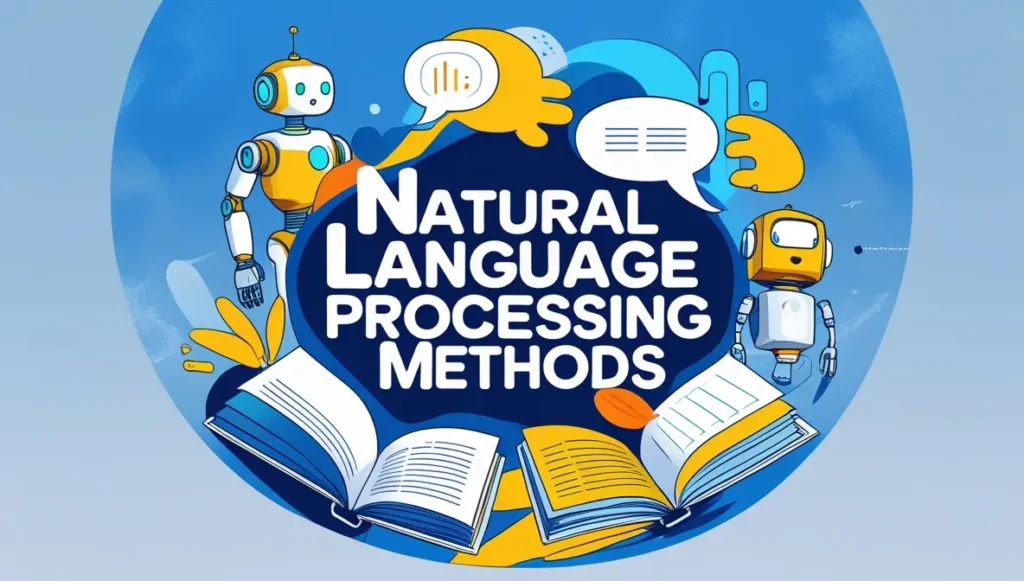
Artificial Intelligence (AI) detectors are based on Natural Language Processing (NLP). It helps machines make sense of human language. These methods are used to allow computers to read and interpret text. NLP acts as an intermediary between human communication and machine understanding.
Language Understanding
Understanding language is a fundamental aspect of NLP. It’s all about understanding words and sentences. AI detectors use algorithms to find context. They recognize structure and semantics in text. This is what lets machines understand human text accurately.
Sentiment Analysis
Sentiment analysis focuses on emotions in text. It also allows AI detectors to recognize positive or negative sentiment. This strategy is used to gauge public opinion. Analysing sentiment , authors can understand the mindsets of an audience around their work. Be it for getting user feedback and reviews.
Image And Video Recognition

Image and video recognition are the main task of AI detectors. It is about reasoning over visual data for object discovery, pattern recognition and action recognition. This finds application in security, healthcare and entertainment. It’s something that enables machines to understand and interpret visual information in the same way that humans do.
AI Screeners are able to rapidly screen a large volume of visual data. They wade through images and video using algorithms to detect and classify the elements they need. This possibility improved automation and decision-making capabilities in different fields.
Pattern Identification
Pattern recognition is one of the basic components of image recognition. AI detectors scan patterns in visuals to identify peculiar ones. Such patterns contribute to the recognition of various objects and scenes. For example, AI recognizes facial characteristics in the case of facial recognition. This guarantees reliable and precise detection and classification.
In video recognition, AI follows patterns of movement. It gets actions out of the video. This characteristic is applied in surveillance to determine abnormal behaviors. Pattern recognition helps find meaning in complex visual information.
Real-time Processing
Effective image and video recognition relies on real-time processing. Reality as Its Lit: The AI Detection Burst: AI detectors rapidly analyze and interpret data as it arrives. This is crucial in dynamic environments where timeouts are not acceptable.
In applications such as automotive vehicles, decisions are also made within milliseconds. The AI recognizes obstructions and responds in real time by changing the course of the vehicle. This rapid reactiveness makes for a safer and more productive work environment. Live video streaming also requires real-time processing. AI reads feeds, offering real-time insights and alerts.
Challenges In AI Detection
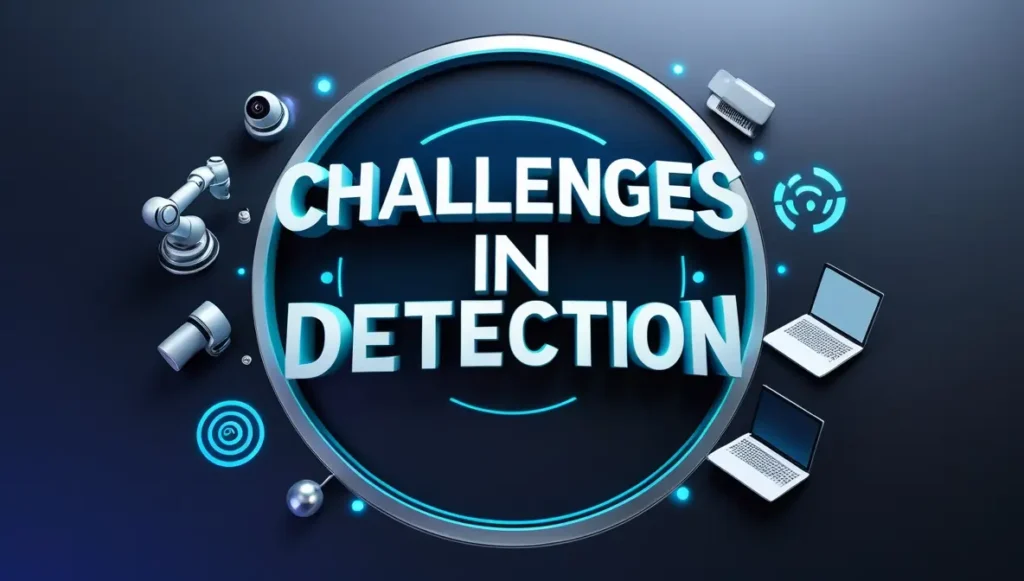
There are several challenges in AI detection. Such obstacles are a problem with regard to accuracy and precision. Reception of these challenges is key to successfully apply AI.
False Positives And Negatives
AI detectors can also get it wrong. False positives happen when AI wrongly raises a red flag. It is also capable of flagging benign data as suspicious. That’s how we get irrelevant actions/notifications. Unvantaged are the converse. The AI overlooks a danger or anomaly. It can result in security holes. Both mistakes can cause chaos.
Ethical Considerations
There is also ethics at play in AI detection. The systems using AI should be privacy-respecting. These can and should not invade the personal (or private) space or data. To use AI ethically, we must be transparent. When AI is watching you, you should know. Fairness is also important. Alex Knight: So AI should not be biased against people. It’s a challenge to strike that balance between accuracy and ethics.
Applications Of AI Detectors
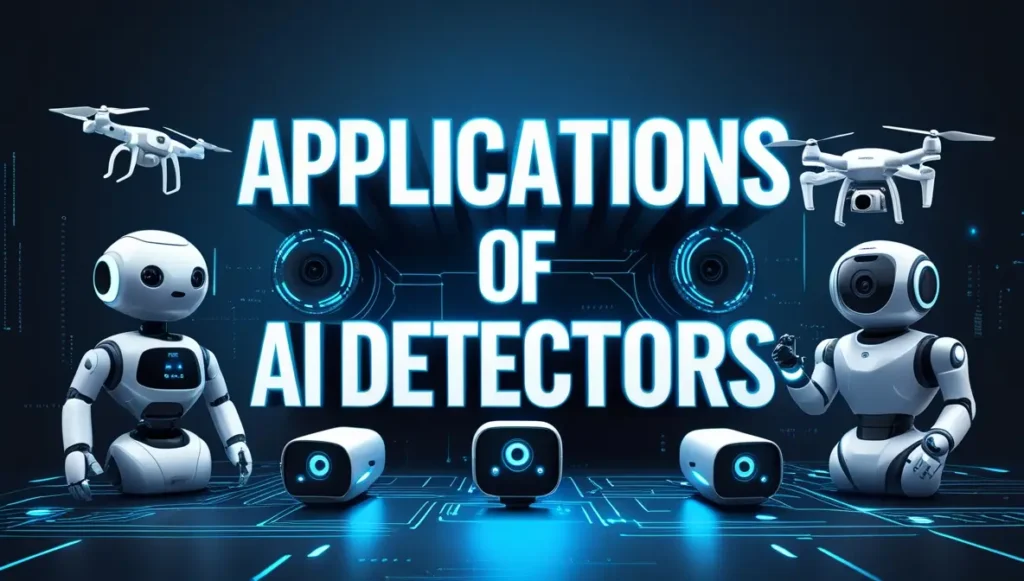
With real-time analysis and pattern detection, AI detectors are revolutionizing many industries. From securing more and more places to disrupting a lot of sectors, these uses are helping to mould our future in ways that we never expected. Add a little hand-wringing over algorithmic bias, and understanding the influence that AI detectors have on various fields can provide a window onto tomorrow’s world, regardless of whether you’re a tech geek or just nosy.
Security Enhancements
Scientists Using a Crystal Ball. Scientists with an AI Crystal Ball. Now, AI detectors are setting the standard for security. They quickly sift through data from surveillance cameras and sensors, specifically looking for odd patterns. Pretend you’re walking into a building where AI has the ability to detect potential threats before they materialize. Nowadays, it’s not only about cameras, it’s about smart cameras that think.
Ever wondered how airports manage to monitor thousands of passengers a day? AI sensors are central to the purpose at hand here. They filter through data to identify anomalies, serving as a way to keep passengers safe without invasive checks. Their prescience about risk is awesome.”
Industry Innovations
AI detectors are reshaping industries. In medicine, they help diagnose diseases early by interpreting medical images. This saves lives and lowers expenses. Think of the difference between getting a diagnosis in minutes, rather than weeks.
AI detectors are also transforming manufacturing. They keep an eye on machinery so they can predict when problems might occur and avoid downtime on the machines. That, in turn, makes for more seamless operations and greater productivity. Think of it as having a guardian angel for your equipment.
Ever heard of how retail shops effectively manage stock? AI detectors sift through purchasing trends, so that stores can predict demand and waste less. It’s a thoughtful strategy that’s good for both business and the environment.
These apps pose an interesting question: How much can AI detectors improve? And while you think about that, think about how you can use all this new stuff to make the world a little better. What can you do with AI detectors in your hand?
Credit: www.linkedin.com
Future Trends In AI Detection
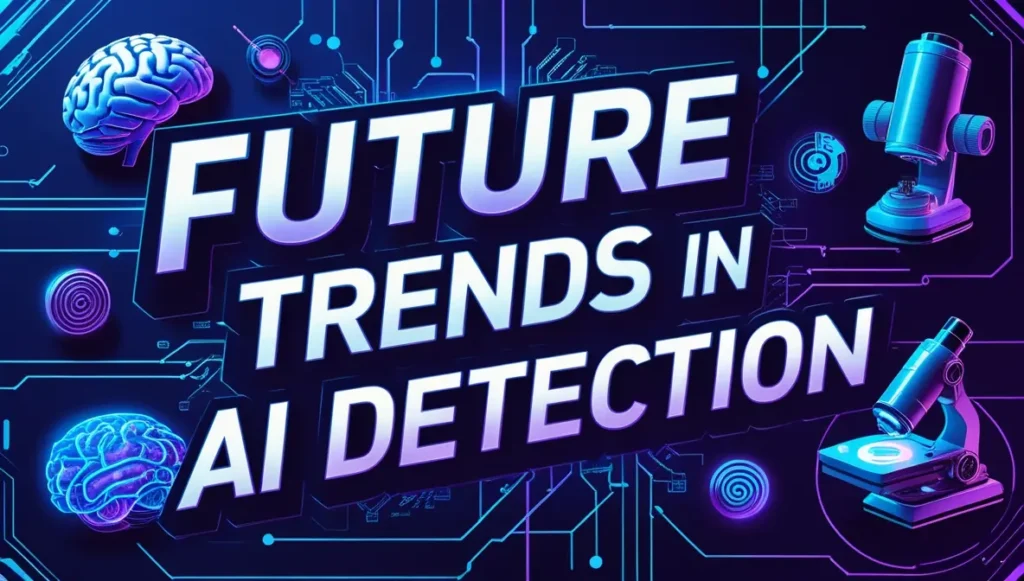
AI recognition technology is going through iterations. New trends emerge every year. These behaviors also influence how AI detectors perform. But they also bias their effectiveness. “If we can make changes in our lives based on these tendencies, we can stay ahead of the curve. It’s training for challenges to come. Here are some of the trends we examined.
Technological Advancements
AI detection pushes forward thanks to technological progress. Machine learning is one of the players. It gives an opportunity for detectors to learn and evolve. It gets better with time: it becomes more accurate. There’s also a big neural network here. They facilitate high-level data processing. It’s these that AI detectors use to recognize patterns. Detection of AI-generated content is done primarily by pattern recognition.
Another technology is natural language processing. It has allowed AI to grasp human language better. This incorporates better AI text detection. The AI detectors get more accurate. They are able to tell if the text is human or AI.
Potential Impacts
AI detection has widespread applications. In education, it monitors student work for AI help. This is how we keep academic integrity. And businesses use it to confirm the authenticity of content. It is good for brand trust. News media also lean on AI detection. It’s a way to stop falsehoods from spreading. Never has accurate news been more crucial.
Privacy concerns also arise. AI detection is all about data crunching. Doing this properly means being very sensitive about individuals’ data. Optimising the trade-off between detection gains and privacy is critical. Moral standards should govern AI deployment. Sensible use is valid because it benefits the community at large.
Frequently Asked Questions
How An AI Content Detector Works?
AI content detectors apply patterns, linguistic structures, and context in the detection of AI-written text. They use algorithms to detect whether text follows known AI writing styles. This is when it checks for authenticity by identifying irregularities in sentence construction, grammar, and word choice. These aids verify authenticity and prevent plagiarism.
How To Fool AI Content Detectors?
It’s tough to swindle AI content detectors, which are based on cutting-edge technology. Just keep making real, human-like stuff.” Mix in different sentence types, don’t use the same phrases over and over, and insert personal touches. Change up your writing style on a regular basis to keep pace with AI detection tools.
Is 40% AI Detection Bad?
If you get a 40% AI detection score, you may have a strong AI theme in your content. Try an even lower detection rate to gain originality, to sound more human. Always monitor and influence content to build credibility and interaction. A line must be walked between AI and human contributions to maintain the quality and respectability.
Why Do AI Detection Programs Think My Writing Is AI?
AI detectors could flag your writing because it could look too much like machine-generated text from AI. Check that sentences are unique and that they are diverse for a more human-like spectrum. Do not use the same phrases and keep the flow in a normal manner so that you won’t be caught. Use different words and unusual phrases in order to resemble human creativity best.
Conclusion
AI detectors are essential in the modern digital society. They verify the AI source so that the content is clear. These tools do this by identifying patterns and structures within text. They are as efficient as machine algorithms. Detectors will evolve with AI.
In time, they will simply give more accurate outcomes. Knowing what they do helps to appreciate why they matter so much. Artificial intelligence content filters protect originality in creation of content. This contributes to credibility and trust on the internet. Be up to date with AI detection for everyone. This provides authenticity and preserves quality.
Thanks to AI detectors, the digital world remains dependable.
